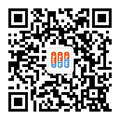What is the Japanese Household Specific Metrology Certification and the Japanese Household Measurement Scale Certification Mark Mark Mark Mark
What is a household specific measuring instrument?

Universal scale
Baby scale
cooking

The household dedicated measuring instrument is a non automatic scale mainly used in the daily life of ordinary consumers, with a scale of 10 mg or greater and a scale number of 100 or greater, meeting the following conditions:
Universal scale
It is a non automatic scale that weighs over 20 kilograms and less than 200 kilograms, specifically used for weighing.
Baby scale
It is a non automatic scale with a weighing capacity of 20 kilograms or less, specifically designed for weighing infants.
cooking
The weighing scale is a non automatic scale with a weighing capacity of 3 kg or less, specifically designed to weigh the weight of food during the cooking process.
Note 1) Scale: The minimum number of digits displayed on the measuring instrument. When the minimum number of digits is displayed as 0, 1, 2, 3, 4 At 9 g, the scale is 1 g.
Note 2) Number of scale markings: The value obtained by dividing the weighing capacity by the scale.
Note 3) Non automatic scale: A scale that weighs in a stationary state instead of continuously automatic weighing.
Note 4) Weighing capacity: The maximum mass that can be measured.
In the outline of household specialized measuring instruments, there are regulations for each household specialized measuring instrument.
1.According to the Measurement Law of the Ministry of Economy, Trade and Industry of Japan, manufacturers or importers have the following obligations when importing household measuring instruments.
When importing and selling designated measuring instruments, they must comply with Japanese technical standards and indicate that they comply with technical standards. When they are sold, they must be displayed (referred to as a positive mark circle notation).

Mark mark: This is the display below, which must be displayed in a place with a diameter of 8 mm or more and easy to see.
2. To all dealers, selling specific household measuring instruments

Mark mark: This is the display below, which must be displayed in a place with a diameter of 8 mm or more and easy to see.

2. To all dealers, selling specific household measuring instruments
According to the Measurement Law, distributors have the following obligations.
When selling designated household measuring instruments, they cannot be displayed for sale or sale unless they have a display indicating compliance with technical standards (known as a positive mark mark).

Note: The following indications must be displayed in a place with a diameter of 8mm or more and easy to see the product.

3. Regarding Manufacturing Notice
4. Regarding the trial purchase investigation
(2) Items to be displayed on the product/individual packaging box and instruction manual

Note: The following indications must be displayed in a place with a diameter of 8mm or more and easy to see the product.

When manufacturing specific household measuring instruments
3. Regarding Manufacturing Notice
When manufacturing specific household measuring instruments, it is necessary to notify the relevant place by having jurisdiction over the location of the main factory or business premises.
When manufacturing designated household measuring instruments, they must comply with technical standards and be displayed on the display indicating that they have met the technical standards at the time of sale (so-called positive mark), and must be completed.
4. Regarding the trial purchase investigation
The Ministry of Economy and Industry has been conducting trial purchase surveys since 2013 (randomly purchasing from the market and confirming compliance with technical standards).
As a result of the investigation, it has been confirmed that there are specific household measuring instruments suspected to be unqualified.
If the importer or manufacturer is found to have violated their obligation to comply with technical standards, they will be bound by measurement laws.
In addition, if the seller does not officially display a positive mark, they will be punished.
We require all operators to comply with Japanese laws and regulations.
We provide corrective improvement guidelines for enterprises suspected of non-compliance, and the main items
reported as corrective/improvement are as follows.
reported as corrective/improvement are as follows.
(1) Performance is important
Importers or manufacturers are not aware of technical standards.
We have set specifications (capacity, scale) that are difficult to ensure quality.
Due to its storage as a long-term inventory item, performance has decreased.
When transported from overseas to Japan or domestically, it cannot be fully processed as a precision instrument. Alternatively, due to insufficient attention to the carrier, the performance may be reduced due to impacts and other factors.
It uses its own tool errors (greater than three times the number of tool errors) for management, which is different from tool errors in established technical standards.
The error of inspection tools from manufacturers to importers should be managed based on 1/2 of the accuracy during use, but due to a lack of understanding or misunderstanding of technical standards, they should be managed during use. The tolerance of instrument error.
Before starting the import, it has been confirmed that it meets the technical standards, but whether it meets the requirements after the actual import is not enough.
(2) Items to be displayed on the product/individual packaging box and instruction manual
Due to a lack of understanding and recognition of technical standards, there is no necessary labeling.
Unable to recognize the ‘positive mark‘, not displayed or insufficient size.
The importer correctly placed the order with the manufacturer, but the inspection or acceptance of the order by the importer was insufficient.
The content displayed in the product, individual packaging box, and instruction manual does not match.
The seller‘s name is displayed, not the actual importer. Alternatively, the name of the business operator that is not displayed.
It is not recognized that pounds (pounds) or stones (St) should not be displayed as illegal units of measurement.
It has been modified so that the function of switching to illegal measurement units cannot be used, but the description of this function is displayed in the instruction manual without deleting it.
Instruct the manufacturer not to use this function to switch to an illegal measurement unit, but the confirmation is insufficient and has not been implemented.
Due to the fact that imported products are sold as is, they are all displayed in foreign languages or do not have necessary labels.
The above is an introduction to the positive mark certification of Japanese household specific measuring instruments according to the Deeplight standard. If you need certification in this regard, you can contact us for consultation
Recommended items
-

Urgent! The forehead temperature gun needs to complete four major project testing and certification before it can be sold
The temperature measuring gun and forehead temperature gun are both electronic and medical products, and medical products are the most strictly controlled products in various countries. To obtain sales licenses, four major projects must be tested and certified....View more -

Deeplight assisted the customer to complete the Japan Metrology Certification
Certification of household measuring instruments is a mandatory certification for instruments with measuring scales used in households. The testing content involves precision testing, impact testing, repeated testing, stability testing, etc. ...View more




